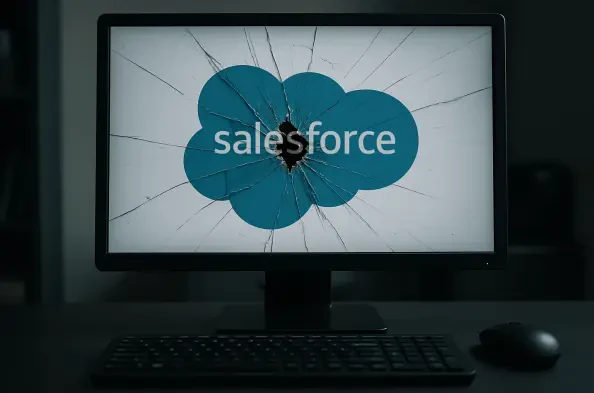I’m thrilled to sit down with Vernon Yai, a renowned data protection expert with deep expertise in privacy protection and data governance. With a career dedicated to risk management and pioneering detection and prevention techniques, Vernon has become a trusted voice in safeguarding sensitive information. Today, we’ll dive into the evolving world of cybercrime, focusing on sophisticated social engineering tactics, the exploitation of cloud platforms, and the challenges companies face in staying ahead of threats like those posed by the ShinyHunters collective. Our conversation will explore how these attackers operate, why their methods are so effective, and what organizations can do to protect themselves in an increasingly complex digital landscape.
Can you start by shedding light on who ShinyHunters are and what has made them such a prominent name in the cybercrime underworld?
ShinyHunters are a loosely organized cybercrime collective that have gained notoriety for their high-profile data breaches targeting major corporations. They’re not a single, cohesive group but more of a banner that various attackers operate under. What sets them apart is their ability to exploit human error and third-party platforms rather than relying on complex technical exploits. They’ve hit big names across industries, stealing massive amounts of data, which has cemented their reputation on the Dark Web as a force to be reckoned with. Their attacks often involve clever social engineering, like voice phishing, and they’ve shown a knack for adapting their tactics over time to stay ahead of defenses.
How does this concept of ShinyHunters operating as a ‘brand name’ rather than a single entity impact the cybercrime ecosystem?
It’s a game-changer, really. By functioning as a brand, ShinyHunters provide instant credibility to any attacker using the name. On the Dark Web, this reputation translates to higher prices for stolen data and more leverage in extortion schemes. It also creates a psychological edge—victims are more likely to panic and pay up when they hear the name. But it’s a double-edged sword because this decentralized model makes it incredibly hard for law enforcement and cybersecurity teams to pin down who’s actually behind an attack. You’re not tracking a single group; you’re chasing a shadow that could be anyone using the name for clout.
Let’s dive into their recent tactics involving Salesforce. Can you explain how ShinyHunters managed to steal data from major corporations through this platform?
Sure, their approach with Salesforce is a masterclass in social engineering. They often start with voice phishing, or ‘vishing,’ where they call employees pretending to be IT staff. They build trust over the phone and convince the employee to install a seemingly legitimate app, like a modified version of Salesforce’s ‘Data Loader,’ which is supposed to help with bulk data operations. In reality, it’s a Trojan horse that gives them access to the company’s environment. Once inside, they can extract sensitive data with ease. It’s not about breaking through firewalls; it’s about tricking someone into opening the door for them.
What does it say about the state of cybersecurity when even a tech giant, after warning about these exact attacks, falls victim to them?
It highlights a brutal truth: no one is immune, no matter how prepared they seem. Even with warnings and recommended protections like strict access controls, human error remains the weakest link. When an insider—however unwittingly—bypasses security measures, all the layered defenses can crumble. This incident shows that insider threats, whether intentional or accidental, are a massive challenge. It’s not just about having the right tools; it’s about ensuring every single person in the organization understands the risks and knows how to spot a scam. That’s a tall order in today’s fast-paced, remote work environments.
ShinyHunters seem to adapt quickly, changing their methods even within a few months. Can you walk us through how their tactics have evolved recently?
Absolutely. They’ve shown real agility in staying ahead of defenders. Earlier this year, they relied heavily on that fake ‘Data Loader’ app, but more recently, they’ve shifted to using tools like Mullvad VPN and TOR IPs to mask their location, making it harder to trace them. They’ve also started using custom Python scripts instead of modified apps, which gives them more flexibility to tailor their attacks. This constant evolution means companies can’t just set up a defense and call it a day—they have to be just as dynamic as the attackers, which is a huge resource drain for most organizations.
Looking back at their past attacks on cloud storage accounts using old credentials, how does that compare to their current strategy with platforms like Salesforce?
There’s a common thread in both approaches: they exploit human mistakes and lax security practices rather than hunting for technical vulnerabilities. Last year, they used old, stolen credentials—often from infostealers—and took advantage of missing multifactor authentication to access cloud accounts. Now, with Salesforce, they’re tricking employees into giving them access directly. Both strategies bank on the fact that people and processes are often the softest targets. Whether it’s reusing passwords or falling for a phishing call, human error is their golden ticket, and they’ve built their playbook around it.
What’s your forecast for the future of social engineering threats like those from ShinyHunters, and how should organizations prepare for what’s coming?
I think social engineering is only going to get more sophisticated, especially with advancements in AI and deepfake technology. Attackers will be able to mimic voices or even video calls with uncanny accuracy, making it harder to spot a fake. We’re also likely to see them target smaller, less-secure third-party vendors as entry points into larger organizations. For companies, the focus has to shift to a shared responsibility model—tightening configurations, enforcing phishing-resistant multifactor authentication, and running regular training and simulations like red-team vishing drills. It’s about raising the cost of these attacks for criminals, so they have to work harder to succeed. Ultimately, it’s a mindset shift: security isn’t just a tech problem; it’s a people problem, and that’s where the battle will be won or lost.






